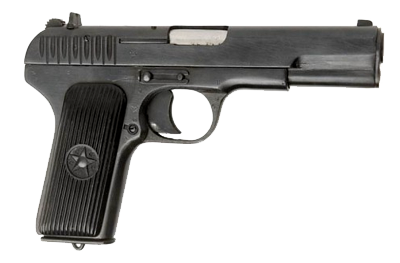The Saiga-12 Shotgun: Unveiling Its Value and Sought-After Variants The Saiga-12, a semi-automatic shotgun developed…
Tula TT-30
 The Tula TT-30: A Collector’s Insight into Its Value and Variants
The Tula TT-30: A Collector’s Insight into Its Value and Variants
The Tula TT-30, an early Soviet semi-automatic pistol designed by Fedor Tokarev, is a firearm steeped in history and engineering excellence. As one of the initial models preceding the more widely known TT-33, the TT-30 holds a special place in the annals of military firearms. Its design was a significant departure from the revolvers previously used, marking a new era in Soviet sidearms. This blog explores the inherent value of the Tula TT-30, highlighting specific variants and calibers that are especially prized by collectors, and delves into the factors that contribute to its desirability and market value.
Valued Variants and Calibers
The TT-30 typically comes in the 7.62x25mm Tokarev caliber, a powerful cartridge that was also used in submachine guns of the era. This caliber is renowned for its high velocity and penetrating capability, making the TT-30 a formidable sidearm. However, among the TT-30 pistols, certain variants stand out:
Early Production Models: The initial production runs from the Tula Arsenal are particularly valuable. These early models often feature markings and manufacturing nuances distinct from later versions, appealing to collectors for their rarity and historical authenticity.
Modified and Experimental Variants: Throughout its service life, the TT-30 underwent various modifications leading to the TT-33 and other experimental models. Variants with unique modifications or those that were part of limited experimental batches are highly sought after for their historical significance and uniqueness.
Foreign Copies and Licensed Productions: While not strictly Tula-made, foreign-produced versions of the TT-30, under license or copies made in countries like China (as the Type 54), North Korea, and Yugoslavia, hold value for collectors interested in the global impact and adaptation of the design. These variants offer insight into the proliferation of Soviet arms technology and are valuable for comparative collections.
Drivers of Value
Several factors contribute to the value of the Tula TT-30, making it a coveted piece among firearm collectors:
Historical Significance: As one of the Soviet Union’s first forays into semi-automatic pistol design, the TT-30’s role in military history is undeniable. Its use during World War II and beyond cements its place in history, adding to its collectible value.
Rarity and Condition: The TT-30 was produced for a relatively short period before being superseded by the TT-33, making pristine or all-original examples rare and highly valuable. The condition of the firearm significantly impacts its value, with well-preserved models fetching premium prices.
Manufacturing Marks and Provenance: Collectors prize TT-30s with clear Tula Arsenal markings or those with documented provenance linking them to specific military units or historical events. Such details provide a tangible connection to the past, enhancing the pistol’s value.
Technical and Design Characteristics: The engineering and design of the TT-30, with its simple yet effective mechanism, are of interest to collectors who appreciate the technological advancements it represented at the time of its introduction.
Legal and Import Restrictions: The availability of the TT-30 in certain markets is affected by legal and import restrictions, which can make them rarer and more desirable in regions where Soviet-era firearms are hard to come by.
In conclusion, the Tula TT-30 is not just a firearm; it is a piece of military history, a marvel of early 20th-century arms design, and a testament to the Soviet Union’s industrial capabilities. Its value to collectors lies in its historical significance, rarity, condition, and the unique story that each pistol tells. Whether it’s an early production model, a variant with unique modifications, or a piece with a well-documented history, each TT-30 holds a special allure. For those passionate about military history, firearms technology, or the evolution of Soviet weaponry, the TT-30 represents an invaluable addition to their collection, embodying the intersection of history, engineering, and artistry in firearm design.
